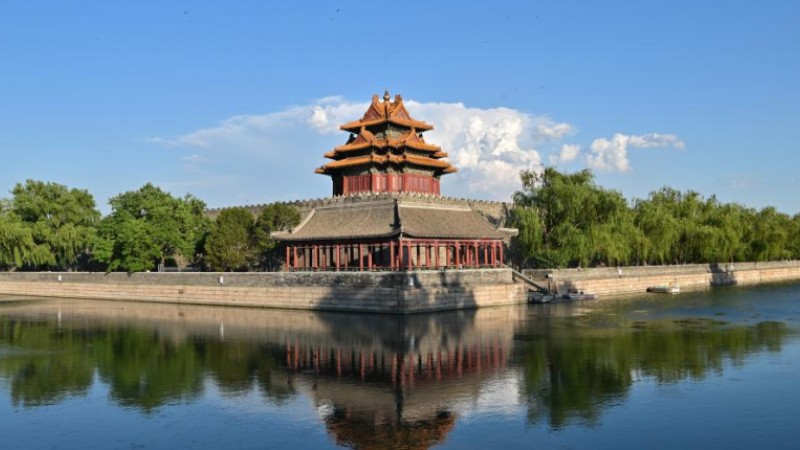Ancient ruins illuminate wonders of Chinese civilization

This photo taken on July 26, 2023 shows a bronze mask at the new building of the Sanxingdui Museum in Guanghan, southwest China's Sichuan Province. (Xinhua/Liu Kun)
BEIJING, July 28 (Xinhua) -- Golden masks, a bronze sacred altar, a bronze figurine with bird-like feet ... Not long ago, these extraordinary artifacts from the Sanxingdui Ruins excavation site lay concealed, hidden amidst the embrace of the earth.
Today, they stand proudly on display at the new building of the Sanxingdui Museum in Guanghan City, southwest China's Sichuan Province, offering audiences a glimpse of their genuine magnificence. Elaborate patterns and visionary designs unite in an awe-inspiring symphony of artistry.
The new facility, which recently started its trial operation, showcases an impressive collection of over 1,500 pieces or sets of relics unearthed from the renowned Sanxingdui Ruins. Among these artifacts, nearly 600 are making their public debuts.
The Sanxingdui Ruins are believed to be the remnants of the ancient Shu Kingdom, which had its heyday around 3,000 years ago. Among the notable artifacts found at the site are bronze masks featuring protruding eyes and a sacred bronze tree standing nearly 4 meters high. These treasures are celebrated as a perfect fusion of the ancient people's vibrant imagination and masterful craftsmanship.
The prominence of the Sanxingdui Ruins in Chinese archaeological history goes beyond their exquisite relics; they have also played a pivotal role in the evolution of Chinese civilization.
The discoveries made at Sanxingdui have raised significant questions about the origins of Chinese civilization. Until the 1980s, the prevailing belief in academic circles was that the cradle of Chinese civilization lay in the Yellow River Basin in northern China.
However, with the unearthing of crucial sites in the Yangtze River Basin, such as Liangzhu, Shijiahe, and Sanxingdui, a new perspective has emerged. The ancient Shu civilization, represented by Sanxingdui, came to be recognized as an essential part of the diverse origins of Chinese civilization.
Archaeologists have also found relics at Sanxingdui that blend different cultural influences from various regions in China. For instance, a sculpture with a human head and the body of a snake incorporates elements from three distinct cultures: the ancient Shu culture, the culture of the pre-Western Zhou Dynasty, and the culture originating from Zhongyuan, known as the central plain area.
The Sanxingdui Ruins reveal that the genes of Chinese civilization were passed down through exchanges and integration between different cultures, experts said.
Covering an area of 12 square km, the Sanxingdui Ruins were accidentally discovered in the 1920s by a farmer who was digging a ditch. The unearthing of a collection of jade and pottery shards from a village in Guanghan captured the interest and curiosity of archaeologists worldwide.
Since then, significant new discoveries have continuously been made at the site. To date, eight sacrificial pits and more than 50,000 pieces of relics have been unearthed at Sanxingdui.
The archaeological achievements there have garnered global fame, but excavation at Sanxingdui remains an ongoing endeavor.
The area explored so far constitutes only a minute fraction of the entire site, merely accounting for about two-thousandths of its total expanse.
In the cultural relic conservation and restoration hall of the Sanxingdui Museum, visitors can get a sneak peek of newly-unearthed relics and the restoration process of such artifacts.
"I can see unrepaired artifacts bearing the patina of time, while workbenches are replete with tools and instruments. It offers us an opportunity to face history, evoking a sense of pride and profound love for China's extraordinary traditional culture," said a visitor.
Photos
Related Stories
Copyright © 2023 People's Daily Online. All Rights Reserved.









